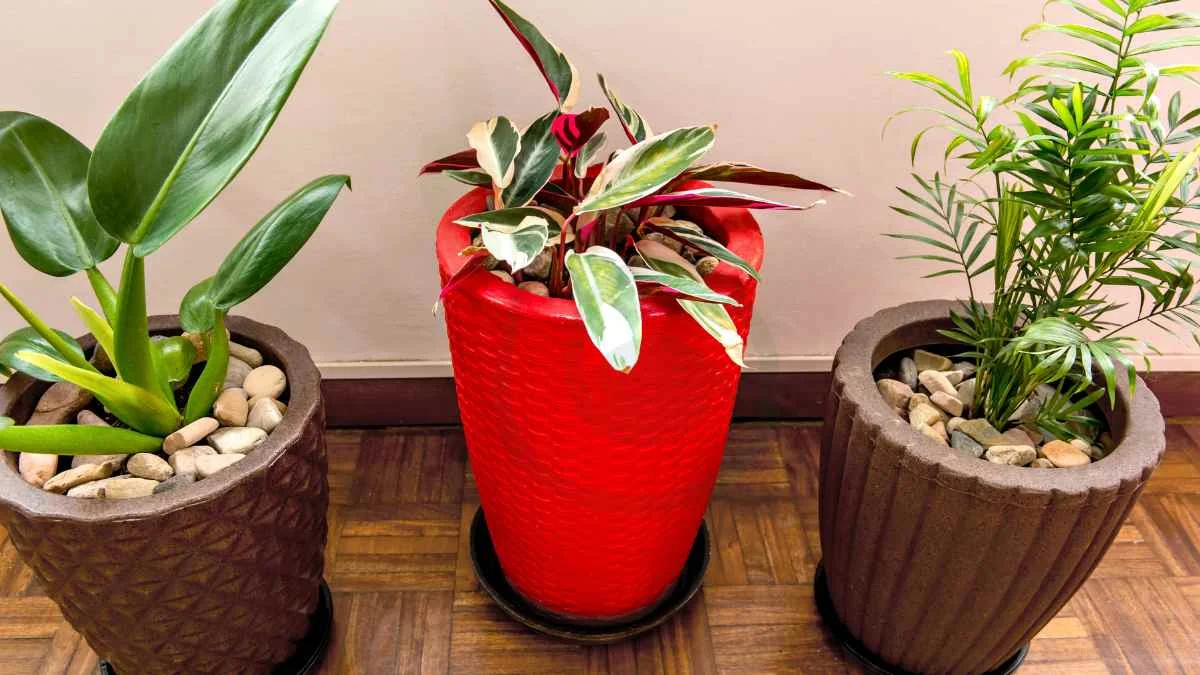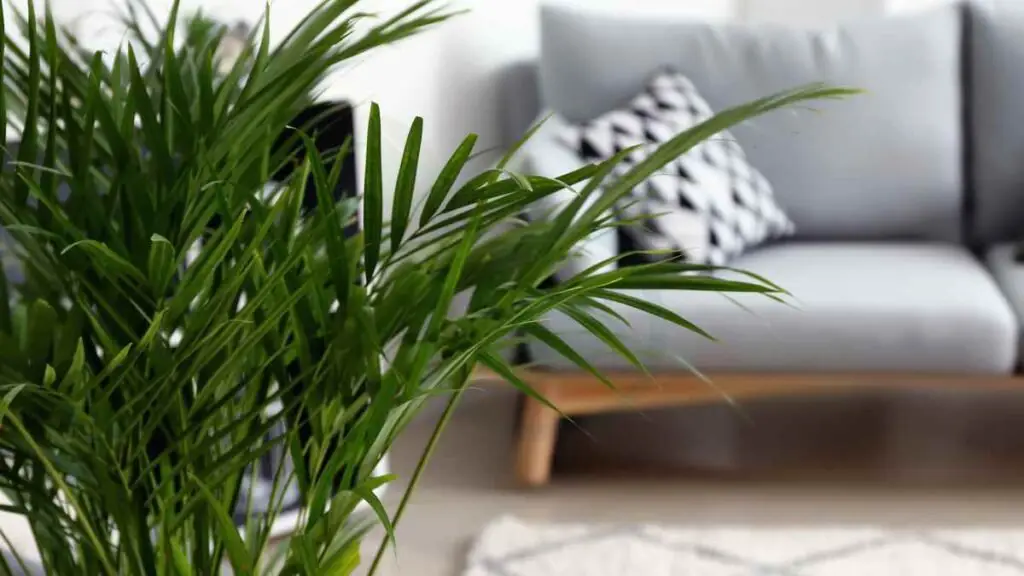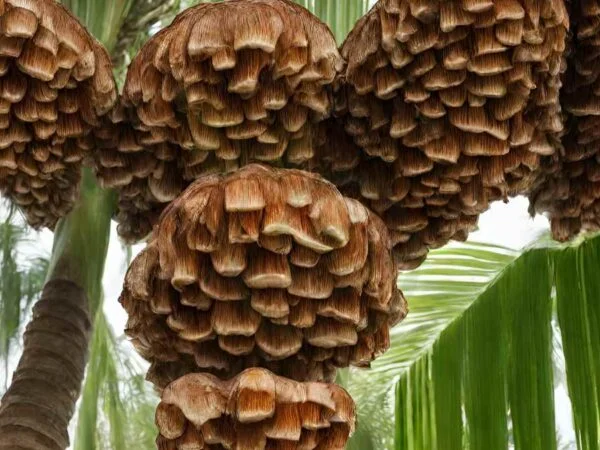
Areca Palm Care Indoor can be straightforward with the right guidance and plant experience. Whether you're a beginner or an experienced plant enthusiast, understanding the needs of your Areca Palm is crucial for its well-being. I'm here to provide you with practical tips and expert advice to ensure your indoor Areca Palm thrives.
To care for your indoor Areca Palm, ensure it receives bright, indirect sunlight and water it thoroughly but allow the soil to dry out slightly between waterings. Maintain a consistent temperature between 65-75°F (18-24°C) and provide adequate humidity, especially in drier climates. Fertilize the palm every 2-3 months during the growing season with a balanced fertilizer. Keep an eye out for pests like spider mites and scale insects, and promptly treat any infestations. Regularly dust the palm's fronds to keep them clean and healthy.
With Areca Palm Care Indoor, there's so much more to explore beyond the basics. From troubleshooting common issues to discovering creative ways to display your palm, I'm here to support your indoor gardening journey every step of the way.
Key Takeaways
- Choose the Right Areca Palm: Select a healthy plant with vibrant green leaves and no signs of pests or diseases.
- Provide Adequate Light and Location: Place your Areca Palm in a spot with bright, indirect sunlight to ensure proper growth.
- Master Watering Techniques: Water your palm regularly, allowing the top inch of soil to dry out between waterings to prevent root rot.
- Maintain Optimal Temperature and Humidity: Keep your Areca Palm in a warm, humid environment to mimic its natural habitat.
- Follow a Fertilization Schedule: Feed your plant with a balanced fertilizer during the growing season to promote lush foliage.
- Regular Pruning and Maintenance: Trim brown or yellowing fronds and remove any dead leaves to keep your Areca Palm looking healthy and vibrant.
Selecting Your Areca Palm

Ideal Varieties
When choosing an Areca palm for indoor care, consider various options based on your preferences. Look at factors like size, leaf color, and growth patterns to find the perfect fit. Ensure the variety you select aligns with your space and lighting conditions.
Buying Tips
To ensure a healthy start, opt for Areca palm plants with vibrant green leaves and no signs of pests or diseases. Check the plant's root system to guarantee it is not rootbound, which can hinder growth. For quality assurance, consider purchasing from reputable nurseries or online stores.
Online Purchase Options
When buying an Areca palm online, research platforms offering a diverse selection of these plants. Compare prices, read reviews, and understand shipping policies before finalizing your purchase. Look for certifications or guarantees to confirm the plant's quality.
Planting Essentials
Choosing Soil
When planting Areca palms, opt for well-draining soil-based compost to ensure proper drainage. The soil should be rich in nutrients to support healthy growth without becoming waterlogged. Avoid soils that are compacted, as they can lead to root rot over time.
Pot Selection
Select pots with drainage holes when planting Areca palms indoors to prevent waterlogging and root rot issues. Choose a pot size that allows ample space for proper root development and growth. Consider decorative pots that not only complement your indoor decor but also provide sufficient space for the plant to thrive.
Light and Location
Light Requirements
Areca palms thrive in bright, indirect light settings, ensuring they receive adequate illumination for healthy growth. Direct exposure to sunlight should be avoided as it can lead to leaf burn. To regulate light intensity, consider using sheer curtains or blinds to filter sunlight effectively.
Best Indoor Spots
Identify spots in your home that offer ample natural light for your Areca palms. Optimal locations include areas near east or west-facing windows, providing a moderate amount of sunlight exposure. Create a cozy nook or dedicated space to showcase the elegance of your Areca palm plant.
Watering Techniques
Proper Watering
Water Areca palms based on the soil's dryness level, typically when the top layer feels dry. Use rainwater, distilled water, or purified water to prevent mineral buildup in the soil. Adjust watering frequency according to seasonal variations and humidity levels for optimal growth.
Moisture Level Check
Assess soil moisture by inserting a finger into the soil to determine dryness. Utilize a moisture meter for precise monitoring of your Areca palm's watering needs. Prevent overwatering by allowing the soil to partially dry out between each watering session.
Temperature and Humidity
Ideal Temperature
Maintain indoor temperatures between 18°C to 24°C for optimal growth of Areca palms. Protect the plant from cold drafts or sudden temperature fluctuations. Consider using a thermometer to regulate temperature levels in the plant's environment.
Humidity Needs
Indoor Areca palms thrive in environments with high humidity levels. Aim for humidity levels around 50% to 60%. To increase humidity, mist the plant regularly or use a humidifier nearby. Avoid placing the plant near air vents or drafty areas that can reduce humidity levels.
Fertilization Schedule
Choosing Fertilizer
Areca palms thrive with a balanced fertilizer, preferably one designed for palm plants. Look for a fertilizer with a ratio of 3:1:2 or 3:1:3, indicating the presence of essential nutrients like nitrogen, phosphorus, and potassium.
To ensure optimal growth, consider using a slow-release fertilizer. This type of fertilizer provides a steady supply of nutrients over an extended period, reducing the risk of over-fertilizing and nutrient deficiencies.
Application Frequency
When it comes to fertilizing your indoor areca palm, aim for a consistent schedule rather than sporadic applications. During the growing season in spring and summer, fertilize once every four to six weeks.
In contrast, reduce the frequency to every eight to twelve weeks during fall and winter when the plant's growth slows down. Always dilute the fertilizer to half-strength to prevent root burn and apply it evenly across the soil surface.
Pruning and Maintenance
Pruning Techniques
Areca palm care indoor requires regular pruning to maintain its health and appearance. Start by removing any damaged or yellowing fronds to promote new growth. Use sharp, clean scissors to make precise cuts at the base of the frond where it meets the main stem. Ensure not to cut into the healthy green parts of the plant.
When pruning, focus on removing dead or browning leaves that can drain energy from the plant. trim back any overgrown stems to maintain a balanced and neat appearance. Regularly inspect your areca palm for signs of pests or diseases while pruning, ensuring early detection and treatment if necessary.
Yellow Fronds Management
Yellow fronds in an areca palm are often a sign of nutrient deficiencies, such as lack of nitrogen or magnesium. To address this issue, consider adjusting your fertilization schedule to provide the necessary nutrients for healthy growth. Remove yellow fronds promptly to prevent further stress on the plant.
Another common cause of yellowing fronds is overwatering. Ensure that your areca palm is not sitting in waterlogged soil, which can lead to root rot and nutrient imbalances. Adjust your watering routine to allow the soil to dry out slightly between waterings, promoting better nutrient absorption and overall plant health.
Propagation Methods
Division Technique
Areca palms can be propagated through division, which involves separating the plant into smaller sections to grow new plants. To propagate using this method, carefully remove the plant from its pot and gently separate the root ball into sections. Ensure each section has roots attached and replant them in individual pots with well-draining soil. Water thoroughly after planting to promote root growth.
Seed Propagation
Seed propagation is another method for growing areca palms. Begin by obtaining fresh seeds from a mature areca palm fruit. Clean the seeds and soak them in warm water for a few days to soften the seed coat. Plant the seeds in a shallow container filled with moist, well-draining soil. Keep the soil consistently moist but not waterlogged, and place the container in a warm, bright location.
Repotting Guide
When to Repot
Areca palms should be repotted every 2-3 years, typically in the spring or early summer. Look for signs such as roots growing through drainage holes or the plant becoming root-bound.
- Signs to watch for:
- Roots circling the pot's bottom
- Slow growth or yellowing leaves
- Soil drying out quickly after watering
Step-by-Step Guide
- Choose a new pot: Select a container that is one size larger than the current one with drainage holes.
- Prepare the plant: Water the areca palm a day before repotting to ease removal from the old pot.
- Remove from current pot: Gently tip the plant on its side, supporting the base, and slide it out of the container.
- Inspect roots: Loosen any compacted roots gently and trim any dead or rotting ones.
- Add fresh soil: Place a layer of well-draining potting mix at the new pot's base and position the plant in the center.
- Fill in with soil: Add more soil around the sides until it reaches about an inch below the pot's rim.
- Water thoroughly: After repotting, water generously to help settle the soil and hydrate the roots.
Pests and Problems
Common Pests
Areca palms are susceptible to pest infestations, with common pests including spider mites, mealybugs, and scale insects. These pests often thrive in dry indoor conditions, causing damage to the plant by sucking sap from the leaves.
Spider mites are tiny pests that create fine webbing on the leaves, while mealybugs appear as white cottony masses along the leaf veins. Scale insects can be identified by their hard, shell-like coverings on the stems and leaves. To treat these pests, isolate the affected plant, then wipe the leaves with a damp cloth to remove them physically.
Disease Prevention
Preventing diseases in indoor areca palms involves maintaining proper humidity levels and avoiding overwatering. Root rot is a common issue caused by soggy soil, leading to yellowing leaves and stunted growth. To prevent this, ensure good drainage by using well-draining soil and pots with drainage holes.
Another common disease is leaf spot, characterized by dark lesions on the foliage. This fungal infection thrives in humid conditions. To prevent leaf spot, avoid overhead watering and ensure good air circulation around the plant. Applying a fungicide can also help control the spread of the disease.
Environmental Stressors
Environmental stressors such as low humidity levels and drafts can impact the health of indoor areca palms. Low humidity can lead to browning leaf tips and edges, while drafts can cause leaf yellowing and dropping. To mitigate these stressors, increase humidity levels by misting the leaves regularly or using a humidifier.
Drafts can be minimized by placing the plant away from air vents or windows where cold drafts may occur. Sudden changes in temperature can shock the plant, leading to wilting or yellowing leaves. Maintaining a consistent temperature range between 65-75 degrees Fahrenheit is ideal for healthy growth.
Final Remarks
In taking care of your indoor areca palm, you've learned essential tips on selecting, planting, and maintaining this tropical beauty. Remember to provide adequate light, water consistently, and monitor temperature and humidity levels. Regular fertilization, pruning, and repotting will keep your plant thriving. Be vigilant against pests and address any issues promptly to ensure your areca palm's health.
Now that you're equipped with the knowledge to nurture your areca palm successfully, put these insights into practice. Create a flourishing environment for your plant by implementing the care techniques discussed. Your dedication will be rewarded with lush greenery and a vibrant indoor oasis.
Frequently Asked Questions
How do I select the right Areca Palm for indoor care?
When selecting an Areca Palm for indoor care, consider these factors:
- Choose a healthy plant with vibrant green leaves.
- Ensure the palm is free from pests or diseases.
- Select a size that fits your space, considering its mature height.
What are the essential planting requirements for Areca Palms indoors?
For planting an Areca Palm indoors:
- Use a well-draining potting mix rich in organic matter.
- Ensure the container has drainage holes to prevent waterlogging.
- Plant in a pot that allows room for root growth.
How should I adjust light and location for my indoor Areca Palm?
Provide indirect sunlight or filtered light, avoiding direct sun exposure. Rotate the plant occasionally to ensure even light distribution. Avoid placing near drafty windows or heating vents.
What watering techniques are best suited for indoor Areca Palms?
Water when the top inch of soil feels dry to the touch. Ensure proper drainage to prevent water accumulation at the roots. Mist the fronds occasionally to increase humidity levels.
How can I maintain optimal temperature and humidity levels for my indoor Areca Palm?
Maintain temperatures between 65°F to 75°F during the day and slightly cooler at night. Keep humidity levels around 50% by using a humidifier or pebble tray with water beneath the plant. Avoid exposing the palm to sudden temperature fluctuations.
Image Source: Paid image from CANVA





